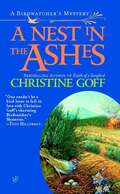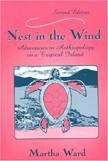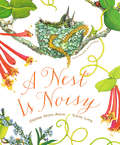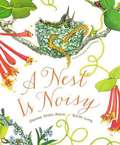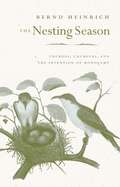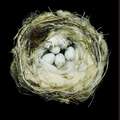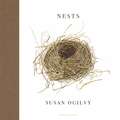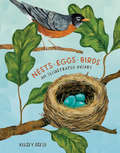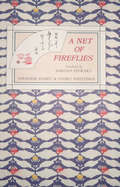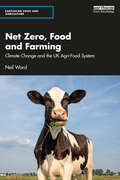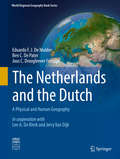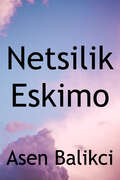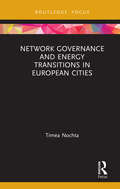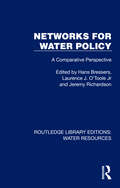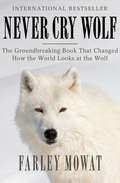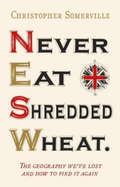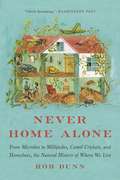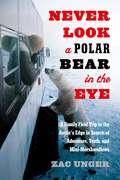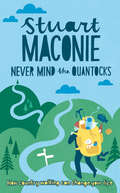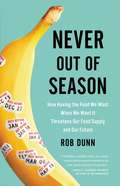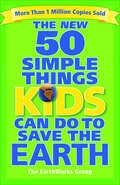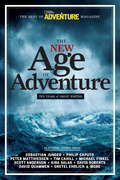- Table View
- List View
A Nest in the Ashes (Birdwatcher's Mystery #3)
by Christine GoffIn her first two novels—A Rant of Ravens and Death of a Songbird—Christine Goff offered a bird’s eye view of murder in the National Park wilds of Colorado. Now, in her latest birdwatcher's mystery, she reveals that there are more things lurking in the trees than birds of prey... National Park Service ranger Eric Linenger has been asked to oversee a "prescribed burn” of 1,000 acres of Rocky Mountain National Park. Although he knows the controlled fire is a necessity, it threatens the habitat of Green-Tailed Towhees and Virginia Warblers. His friends at EPOCH are strongly opposed, but it’s Eric’s job. Once lit, the flames quickly spread beyond the intended acreage—destroying a real estate development before finally being extinguished. The body of Eric's boss, Wayne Devlin, is found near the origin of the blaze—and it appears as if he deliberately intended the fire to rage out of control. As Eric investigates, he discovers that many people had reasons for ensuring the burn went all to blazes—including some of his friends...
Nest in the Wind: Adventures in Anthropology on a Tropical Island (2nd Edition)
by Martha WardDuring her first visit to the beautiful island of Pohnpei in the middle of the Pacific Ocean, anthropologist Martha Ward discovered people who grew quarter-ton yams in secret and ritually shared a powerful drink called kava. She managed a medical research project, ate dog, became pregnant, and responded to spells placed on her. Thirty years later she returned to Pohnpei to learn what had happened there since her first visit. Were islanders still casual about sex? Were they still obsessed with titles and social rank? Was the island still lush and beautiful? Had the inhabitants remained healthy? This second edition of Ward's best-selling account is a rare, longitudinal study that tracks people, processes, and a place through decades of change. It is also an intimate record of doing fieldwork that immerses readers in the sights, smells, tastes, sounds, and the sensory richness of Pohnpei. Ward addresses the ageless ethnographic questions about family life, politics, religion, traditional medicine, magic, and death together with contemporary concerns about postcolonial survival, the discontinuities of culture, and adaptation to the demands of a global age. Her discoveries illuminate the evolution of a culture possibly distant from yet important to people living in other parts of the world.
A Nest Is Noisy
by Dianna Hutts AstonFrom the award-winning creators of An Egg Is Quiet, A Seed Is Sleepy, A Butterfly Is Patient, and A Rock Is Lively comes this gorgeous and informative look at the fascinating world of nests. From tiny bee hummingbird nests to orangutan nests high in the rainforest canopy, an incredible variety of nests are showcased here in all their splendor. Poetic in voice and elegant in design, this carefully researched book introduces children to a captivating array of nest facts and will spark the imaginations of children whether in a classroom reading circle or on a parent's lap. Plus, this is a fixed-format version of the book, which looks nearly identical to the print version.
A Nest Is Noisy
by Long Dianna Hutts AstonFrom the award-winning creators of An Egg Is Quiet, A Seed Is Sleepy, A Butterfly Is Patient, and A Rock Is Lively comes this gorgeous and informative look at the fascinating world of nests. From tiny bee hummingbird nests to orangutan nests high in the rainforest canopy, an incredible variety of nests are showcased here in all their splendor. Poetic in voice and elegant in design, this carefully researched book introduces children to a captivating array of nest facts and will spark the imaginations of children whether in a classroom reading circle or on a parent's lap.
The Nesting Season: Cuckoos, Cuckolds, and the Invention of Monogamy
by Bernd HeinrichWhy are the eggs of the marsh wren deep brown, the winter wren's nearly white, and the gray catbird's a brilliant blue? And what in the DNA of a penduline tit makes the male weave a domed nest of fibers and the female line it with feathers, while the bird-of-paradise male builds no nest at all, and his bower-bird counterpart constructs an elaborate dwelling? These are typical questions that Bernd Heinrich pursues in the engaging style we've come to expect from him supplemented here with his own stunning photographs and original watercolors. One of the world's great naturalists and nature writers, Heinrich shows us how the sensual beauty of birds can open our eyes to a hidden evolutionary process. Nesting, as Heinrich explores it here, encompasses what fascinates us most about birds from their delightful songs and spectacular displays to their varied eggs and colorful plumage; from their sex roles and mating rituals to nest parasitism, infanticide, and predation. What moves birds to mate and parent their young in so many different ways is what interests Heinrich and his insights into the nesting behavior of birds has more than a little to say about our own.
Nests: Fifty Nests and the Birds That Built Them
by Sharon BealsSharon Beals' gorgeous photographs of nests offer a new window onto the life and beauty of birds. Drawn from the collections of the California Academy of Sciences, the Museum of Vertebrate Zoology at UC Berkeley, and the Western Foundation of Vertebrate Zoology, these birds' nests from around the world offer astonishing insight into the intricate detail wrought by nature's most fastidious architects. Lovely images of nests and eggs are set against rich black backgrounds, and are accompanied by fascinating and informative portraits--conveyed through words and illustrations--of the birds that built them. A beautiful volume, Nests is the perfect gift for birders, bird lovers, and anyone captivated by the fleeting and fascinating splendor of the natural world.
Nests
by Susan OgilvyAn exquisitely illustrated, one-of-a-kind celebration of the hidden beauty of nature and the ingenuity of birdsSusan Ogilvy started painting bird nests almost by accident. One day, while tidying up her garden after a storm, she found a chaffinch nest - a strange, sodden lump on the grass under a fir tree. She carried it inside and placed it on a newspaper; over the next few hours, as the water drained out of it, the sodden lump blossomed into a mossy jewel. She was amazed, and dropped everything to make a painting of the nest at exact life size.This was the start of an obsession; Ogilvy has since painted more than fifty bird nests from life, each time marvelling at its ingenious construction. Every species of bird has its own vernacular, but sources its materials - most commonly twigs, roots, grasses, reeds, leaves, moss, lichen, hair, feathers and cobwebs, less usually, mattress stuffing and string - according to local availability. Ogilvy would, of course, never disturb nesting birds; instead she relies upon serendipity, which is why all her nests have either been abandoned after fulfilling their purpose, or displaced by strong winds.Although Nests showcases the specimens she has found near her homes in Somerset and on the Isle of Arran, its subject matter is by no means only British, since these same birds can be found all over Europe, Scandinavia and as far afield as Russia, Turkey and North Africa. This wondrous book is all the more special for its rarity. Few modern books exist specifically on the subject of bird nests; the most recent among the author's reference works was published in 1932. Exquisitely designed and packaged, Nests will be an essential addition to the libraries of all nature lovers.
Nests, Eggs, Birds: An Illustrated Aviary
by Kelsey OseidDiscover the world's birds, their homes, and their eggs in this gorgeously illustrated, entertaining, and educational guide.Did you know that the tailorbird "sews" leaves together to make its nest? Or that hummingbird eggs are the size of jellybeans? Birds are some of the world's most beautiful and interesting creatures, and their nests and eggs are no exception, displaying a stunning diversity of shapes, sizes, functions, and materials. In Nests, Eggs, Birds, celebrated artist and author Kelsey Oseid explores the fascinating ins and outs of where and how dozens of avian species--robins, birds of paradise, crows, owls, penguins, and more--make their homes and lay their eggs. Full of striking naturalistic art and fun scientific facts, Nests, Eggs, Birds will delight bird lovers of all ages.
A Net of Fireflies
by Harold StewartA Net of Fireflies is a Collection of Japanese Haiku and Haiku paintings.
A Net of Fireflies
by Harold StewartA Net of Fireflies is a Collection of Japanese Haiku and Haiku paintings.
Net Zero, Food and Farming: Climate Change and the UK Agri-Food System (Earthscan Food and Agriculture)
by Neil WardThis book examines the implications of the net zero transition for food and farming in the UK and how these can be managed to avoid catastrophic climate change in the crucial decades ahead. For the UK to meet its international obligations for reducing greenhouse gas emissions, nothing short of a revolution is required in our use of land, our farming practices and our diet. Taking a historical approach, the book examines the evolution of agriculture and the food system in the UK over the last century and discusses the implications of tackling climate change for food, farming and land use, setting the UK situation in an international context. The chapters analyse the key challenges for this transition, including dietary change and food waste, afforestation and energy crops, and low-emission farming practices. This historical perspective helps develop an understanding of how our food, farming and land use system has evolved to be the way that it is, and draws lessons for how the agri-food system could evolve further to support the transition to net zero and avoid catastrophic climate change. Written in a clear and accessible style, this book will be essential reading to students and scholars of food, agriculture and the environment, as well as policymakers and professionals involved climate change policy and the agriculture and food industry.
The Netherlands and the Dutch: A Physical and Human Geography (World Regional Geography Book Series)
by Eduardo F. De Mulder Ben C. De Pater Joos C. Droogleever Fortuijn Len A. De Klerk Jerry Van DijkThis book presents a geographical survey of the Netherlands, reviewing recent and historic developments that made the nation. It is a relatively wealthy country and the Dutch belong to the happiest and healthiest on earth. But these qualities are not evenly spread over the country. The urban agglomeration of Randstad Holland in the west hosts most of the nation’s capital and young, well-educated people whereas older and less-educated people are concentrated in the peripheral areas in the north, east and south. Interactions between physical and human geographical aspects of the Netherlands are described quite extensively. Its position on one of Europe’s most prominent deltas, its abundance of energy resources and the course of history have all contributed to its present national position and international networks. But early and recent Dutch have also shaped this country. They reclaimed lakes and shallow seas, protected the lowlands against floods, re-allotted land parcels and designed and developed urban areas. Besides its focus on water-related topics, the book also covers social and cultural aspects. The book also discusses future challenges and offers scenarios for solutions. This is a book for those interested in a wide variety of recent aspects of the geography of the Netherlands described in a historical context. It appeals to students and researchers of many disciplines in geography, urban and landscape planning, water management, history and cultural studies.
The Netsilik Eskimo
by Asen BalikciThis book preserves the traditional way of life of the Netsilik Eskimo "People of the Seal" who lived close to the Arctic Circle in one of the harshest and most demanding environments known to man.
Network Governance and Energy Transitions in European Cities (Routledge Focus on Energy Studies)
by Timea NochtaThis book investigates and evaluates the opportunities and limitations of network governance in building local capacity for energy infrastructure governance. Presenting a comparative analysis of three city cases from across Europe- Birmingham, Frankfurt and Budapest- this book demonstrates how local factors shape the prospect of network governance to support low-carbon energy transitions. It maps out existing governance networks, highlighting the actors involved and their interactions with one another, and also discusses the role and embeddedness of networks in the urban governance of low-carbon energy. Drawing on case study evidence, Nochta develops a comparative analysis which discusses the intricate connections between network characteristics, context and impact. It highlights that organisational fragmentation; the complexity of the low-carbon energy problem and historical developments all influence network characteristics in terms of degree of integration and vertical (hierarchical) power relationships among network actors. Overall, the book concludes that understanding such links between context and networks is crucial when designing and implementing new governance models aimed at facilitating and governing low-carbon urban development. Low-Carbon Energy Transitions in European Cities will be of great interest to scholars of energy policy, urban governance and sustainability transitions.
Networks for Water Policy: A Comparative Perspective (Routledge Library Editions: Water Resources)
by Hans Bressers Laurence J. O’Toole Jr Jeremy RichardsonNetwork models for analysing public policy have become widely used in recent years. This volume, originally published in 1995, assesses the network idea by applying a common perspective on network analysis to the constellations involved in water policy formation and implementation in England and Wales, Germany, Hungary, the Netherlands, the USA and at the level of the EU. Water policy – addressing basic human needs for the supply of adequate surface and groundwater as well as for the maintenance and improvement of water quality, is an increasingly salient subject. Each case covered in this volume treats the issues of water policy network composition and structure, and determinants of network characteristics, as well as documenting the influence of the networks on policy developments towards more network openness, emulation of business behaviour nd less domination by traditional professional groups such as engineers. Essays by the editors provide a common analytical perspective and offer both explicitly-comparative conclusions and evidence-based assessments of the strengths and limitations of the network perspective.
Never Cry Wolf: Penguin Modern Classics Edition (Hrw Library)
by Farley MowatThe bestselling nature classic that stands as a hallmark of conservation writing and forever changed the way we look at wolves In 1948, Farley Mowat landed in the far north of Manitoba, Canada, a young biologist sent to investigate the region's dwindling population of caribou. Many people thought that the caribous' conspicuous decline had been caused by the tundra's most notorious predator: the wolf. Alone among the howling canine packs, Mowat expected to find the bloodthirsty beasts of popular conception. Instead, over the course of a summer spent observing the powerful animals, Mowat discovered an animal species with a remarkable capacity for loyalty, virtue, and playfulness. Praised for its humor and engrossing narrative, Never Cry Wolf describes a group of wolves whose interactions and behaviors seem strikingly similar to our own. Mowat humanizes these animals that have long been demonized, turning the widespread narrative of the "savage wolf" on its head and inspiring many governments to enact protective legislation for the North's most mysterious creature.
Never Eat Shredded Wheat: The Geography We've Lost And How To Find It Again
by Christopher SomervilleDo you remember using the mnemonic Never Eat Shredded Wheat to remember the compass directions?<P> Bognor Regis...Aberystwyth...Glasgow...Can you place them on a map? Most people can't these days. What kind of countryside do you pass through on your way to the Cairngorms, or the Fens, or Northumberland? What's north of the Pennines? And what's it like when you get there? Most folk wouldn't have a clue. Increasing numbers of us don't have a basic geographical notion of these islands. Blame it on a decline in formal geography teaching, or Sat-Nav and other 'A to Z and nothing in between' devices that make us lazy -- we are becoming the best travelled and least well orientated Britons ever seen. <P> Now Christopher Somerville, bestselling author of Coast and many other books of UK exploration, presents the basics of what belongs where, which counties border one another, and what lies beyond the Watford Gap. He reminds us of the watery bits, the lumpy bits and the flat bits, and gets to grips with the smaller islands surrounding Britain -- and much more. Never Eat Shredded Wheat is a reminder of all the fascinating British geography once learned at school - geography that brings our islands vividly to life - geography which we have forgotten, or never even knew.
Never Eat Shredded Wheat
by Christopher SomervilleBognor Regis...Aberystwyth...Glasgow...Can you place them on a map? Most people can't these days. What kind of countryside do you pass through on your way to the Cairngorms, or the Fens, or Northumberland? What's north of the Pennines? And what's it like when you get there? Most folk wouldn't have a clue. Increasing numbers of us don't have a basic geographical notion of these islands. Blame it on a decline in formal geography teaching, or Sat-Nav and other 'A to Z and nothing in between' devices that make us lazy -- we are becoming the best travelled and least well orientated Britons ever seen. Now Christopher Somerville, bestselling author of Coast and many other books of UK exploration, presents the basics of what belongs where, which counties border one another, and what lies beyond the Watford Gap. He reminds us of the watery bits, the lumpy bits and the flat bits, and gets to grips with the smaller islands surrounding Britain -- and much more. Never Eat Shredded Wheat is a reminder of all the fascinating British geography once learned at school - geography that brings our islands vividly to life - geography which we have forgotten, or never even knew.
Never Home Alone: From Microbes to Millipedes, Camel Crickets, and Honeybees, the Natural History of Where We Live
by Rob DunnA natural history of the wilderness in our homes, from the microbes in our showers to the crickets in our basements <P><P>Even when the floors are sparkling clean and the house seems silent, our domestic domain is wild beyond imagination. In Never Home Alone, biologist Rob Dunn introduces us to the nearly 200,000 species living with us in our own homes, from the Egyptian meal moths in our cupboards and camel crickets in our basements to the lactobacillus lounging on our kitchen counters. You are not alone. <P><P>Yet, as we obsess over sterilizing our homes and separating our spaces from nature, we are unwittingly cultivating an entirely new playground for evolution. These changes are reshaping the organisms that live with us--prompting some to become more dangerous, while undermining those species that benefit our bodies or help us keep more threatening organisms at bay. <P><P>No one who reads this engrossing, revelatory book will look at their homes in the same way again.
Never Look a Polar Bear in the Eye: A Family Field Trip to the Arctic's Edge in Search of Adventure, Truth, and Mini-Marshmallows
by Zac Unger"I like to go out for walks, but it's a little awkward to push the baby stroller and carry a shotgun at the same time."--housewife from Churchill, Manitoba Yes, welcome to Churchill, Manitoba. Year-round human population: 943. Yet despite the isolation and the searing cold here at the arctic's edge, visitors from around the globe flock to the town every fall, driven by a single purpose: to see polar bears in the wild.Churchill is "The Polar Bear Capital of the World," and for one unforgettable "bear season," Zac Unger, his wife, and his three children moved from Oakland, California, to make it their temporary home. But they soon discovered that it's really the polar bears who are at home in Churchill, roaming past the coffee shop on the main drag, peering into garbage cans, languorously scratching their backs against fence posts and front doorways. Where kids in other towns receive admonitions about talking to strangers, Churchill schoolchildren get "Let's All Be Bear Aware" booklets to bring home. (Lesson number 8: Never explore bad-smelling areas.)Zac Unger takes readers on a spirited and often wildly funny journey to a place as unique as it is remote, a place where natives, tourists, scientists, conservationists, and the most ferocious predators on the planet converge. In the process he becomes embroiled in the controversy surrounding "polar bear science"--and finds out that some of what we've been led to believe about the bears' imminent extinction may not be quite the case. But mostly what he learns is about human behavior in extreme situations . . . and also why you should never even think of looking a polar bear in the eye.
Never Mind the Quantocks: How Country Walking Can Change Your Life
by Stuart MaconieIn this hilarious and heart-warming collection of essays, writer and broadcaster Stuart Maconie reflects on a life spent exploring the British countryside on foot. From the splendour of the Pennines and the Lake District to the drama of the Dorset coast; from the canals of the Midlands to wildest Scotland, this book is an attempt to explain a passion for walking and the delights it can bring. Culled from his monthly column in Country Walking magazine, it's full of the beautiful places, magical moments and wonderful characters Stuart has encountered on his travels. It discusses such intrepid adventures as taking on the famous 'Wainwright' fells of the Lake District, walking Hadrian's Wall with colleague Mark Radcliffe, and why the most important things to carry in a rucksack are a transistor radio and a small bottle of red wine.
Never Out of Season: How Having the Food We Want When We Want It Threatens Our Food Supply and Our Future
by Rob DunnA Fast Food Nation for the foods we grow and depend onThe bananas we eat today aren't your parents' bananas: We eat a recognizable, consistent breakfast fruit that was standardized in the 1960s from dozens into one basic banana. But because of that, the banana we love is dangerously susceptible to a pathogen that might wipe them out.That's the story of our food today: Modern science has brought us produce in perpetual abundance-once-rare fruits are seemingly never out of season, and we breed and clone the hardiest, best-tasting varieties of the crops we rely on most. As a result, a smaller proportion of people on earth go hungry today than at any other moment in the last thousand years, and the streamlining of our food supply guarantees that the food we buy, from bananas to coffee to wheat, tastes the same every single time.Our corporate food system has nearly perfected the process of turning sunlight, water and nutrients into food. But our crops themselves remain susceptible to the nature's fury. And nature always wins.Authoritative, urgent, and filled with fascinating heroes and villains from around the world, Never Out of Season is the story of the crops we depend on most and the scientists racing to preserve the diversity of life, in order to save our food supply, and us.
The New 50 Simple Things Kids Can Do to Save the Earth
by Sophie Javna EarthWorks GroupIn The New 50 Simple Things Kids Can Do to Save the Earth, Sophie and John have revised the original best-selling book for a concerned and vibrant Web 2.0 youth market. It's easy-to-do and kid-friendly projects show that kids can make a difference, and each chapter is packed with tons of links to groups and resources. What makes this book stand out, though, is that it doesn't just inform kids, it encourages them to make a difference by providing them, their friends and their families the tools to take action.Together, John and Sophie enlighten, educate, and encourage our children with easy and smart ways to save the earth. Pretty darn cool, huh? We thought so. What you can do: Order now and help save the only earth we've got.Mother Earth needs our help now.
The New Age of Adventure
by John RasmusRasmus (founding editor-in-chief, National Geographic Adventure magazine) presents a collection of 25 of the best nonfiction stories from the first decade of Adventure magazine. Written by 20 well-known, prize-winning American journalists, war correspondents, travel writers, naturalists, and novelists, the stories describe experiences from all parts of the globe and in all types of situations, from Sebastian Junger's opening account of a trip to Afghanistan to interview guerilla leader Ahmad Shah Massoud, to Philip Caputo's experience tracking Kenya's man-eating Tsavo lions, Scott Anderson's tale of a coming-of-age road trip across Europe and Asia, and Gretel Ehrlich's story of the nomadic reindeer herders in northwestern Russia. No subject index. Annotation c2010 Book News, Inc. , Portland, OR (booknews. com)
